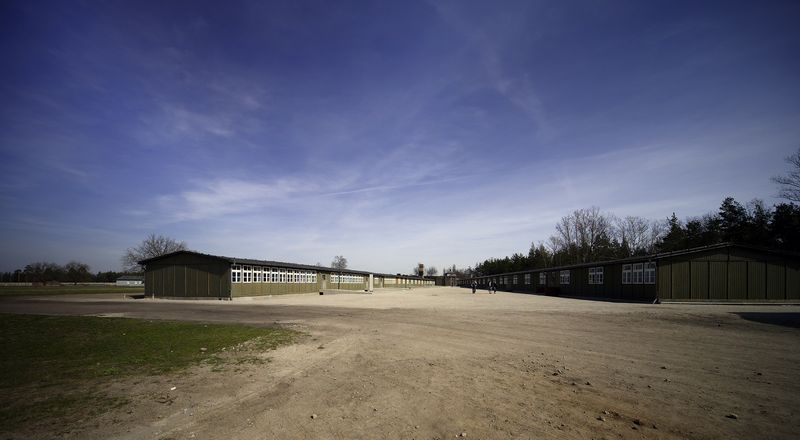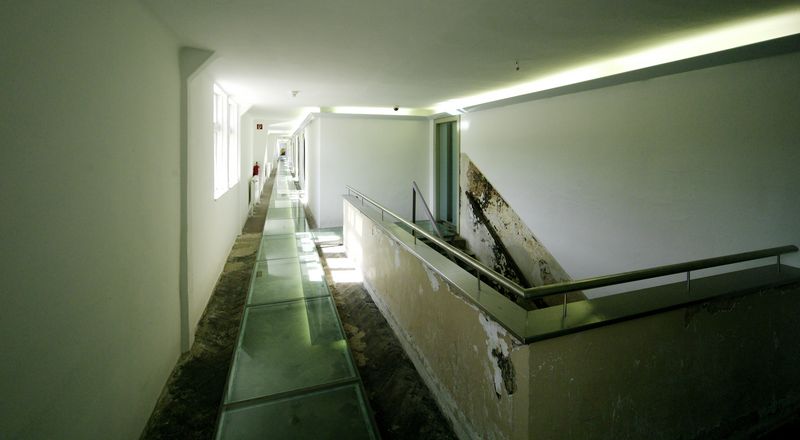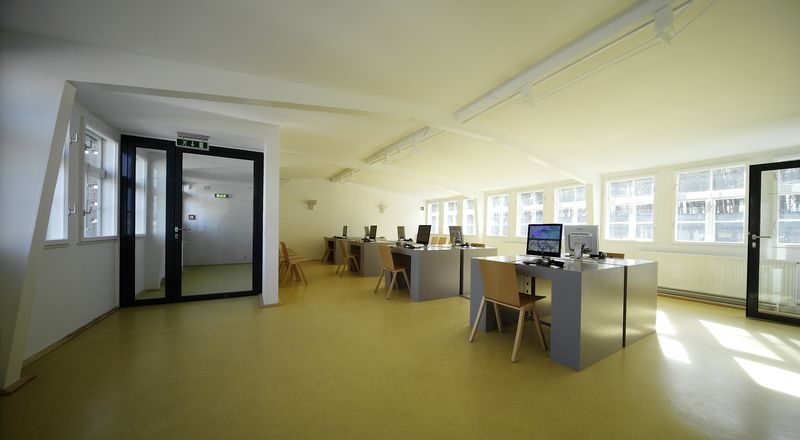Medical Care and Crime. The Infirmary of the Sachsenhausen Concentration Camp 1936-1945
Medical Care and Crime. The Infirmary of the Sachsenhausen Concentration Camp 1936-1945
12 Images
Opened in 2004, the permanent exhibition is located in the original barracks R I and R II, which have been restored under the direction of architect Dr. Günter Hipfel. The historical authenticity of these buildings, erected in 1936, is emphasised by the design of the exhibition, by Frey Aichele Team from Berlin. The ceiling and walls have been kept free of display units and installations. Visitors pass through the rooms on a raised floor of glass panels, between which there rise large, freestanding, glass display cases; these contain exhibits and a large number of media stations. Visitors enter the exhibition in barrack R II, then pass along the underground tunnel between the barracks and up through the cellar into R I. The rooms in the cellar have been left largely in their original state and only information panels about their previous functions have been added.
Containing approximately one thousand exhibits in around 800 square metres, “Medical Care and Crime” is by far the largest exhibition in Sachsenhausen Memorial. The first subject on which the exhibition focuses is that of “everyday” medical care in the concentration camp. The SS assigned specific functions to the infirmary, which changed over the course of time. Whereas at the beginning, the infirmary was only intended to provide a minimum of medical care for inmates (also shown off for propaganda purposes), its role changed after the beginning of the war to one of preventing epidemics.
Deteriorating living conditions had allowed infectious diseases to spread rapidly throughout the camp, which also posed a threat to the SS guards. Beginning in 1942, the infirmary served mainly to restore ill inmates to a state in which they were fit to work in support of the German war effort. Closely related to this policy was the selection and murder of patients whom the SS considered would not recover sufficiently for further forced labour. In the summer of 1944, the infirmary acquired a further function as a prison hospital run by the Gestapo special commission into the coup attempt of 20th July. Lastly, certain departments of the infirmary were used as propaganda showcases. They were a highlight of the tours of the camp given to selected visitors, which took place several times a week.
The second main section of the exhibition looks in detail at the medical crimes committed in Sachsenhausen Concentration Camp. Besides the eugenically motivated compulsory sterilisation and compulsory castration of prisoners classified as “homosexual”, these include, most notably, the “14 f 13” programme to murder ill prisoners. A further part of the exhibition deals with the anthropomorphic examinations to which the Racial Hygiene Research Unit, based in Berlin, subjected Sinti and Roma. These so-called “racial assessments” are placed in the context of the overall history of the persecution of that minority, in order to make clear the central role played by scientists in the systematic mass murder of Roma and Sinti. The last section of the exhibition considers medical experimentation on humans, taking four case studies as examples of the vast number carried out in Sachsenhausen Concentration Camp.
One of these cases is that of eleven young Jews, who in the summer of 1943 were taken from the arrival ramp at Auschwitz to the infirmary in Sachsenhausen for hepatitis experiments. Their story is told at the very location in which it first took place: Room 51 of barracks R II, where the eleven boys and young men had to live for over a year during the course of the experiment.
The exhibition concludes with the Learning Centre, which has eight computer work stations offering interactive multimedia content related to the themes of the exhibition. This is available either in English or in German and consists of approximately 1,300 screen pages. Its core elements are ten “speaking objects”, which introduce users to the main topics of the exhibition. There is also a lexicon, which contains more than 500 entries on historical topics, specialist medical terms, the victims and the perpetrators, as well as background information on the general context of Nazi medicine, its consequences, and specific details.












